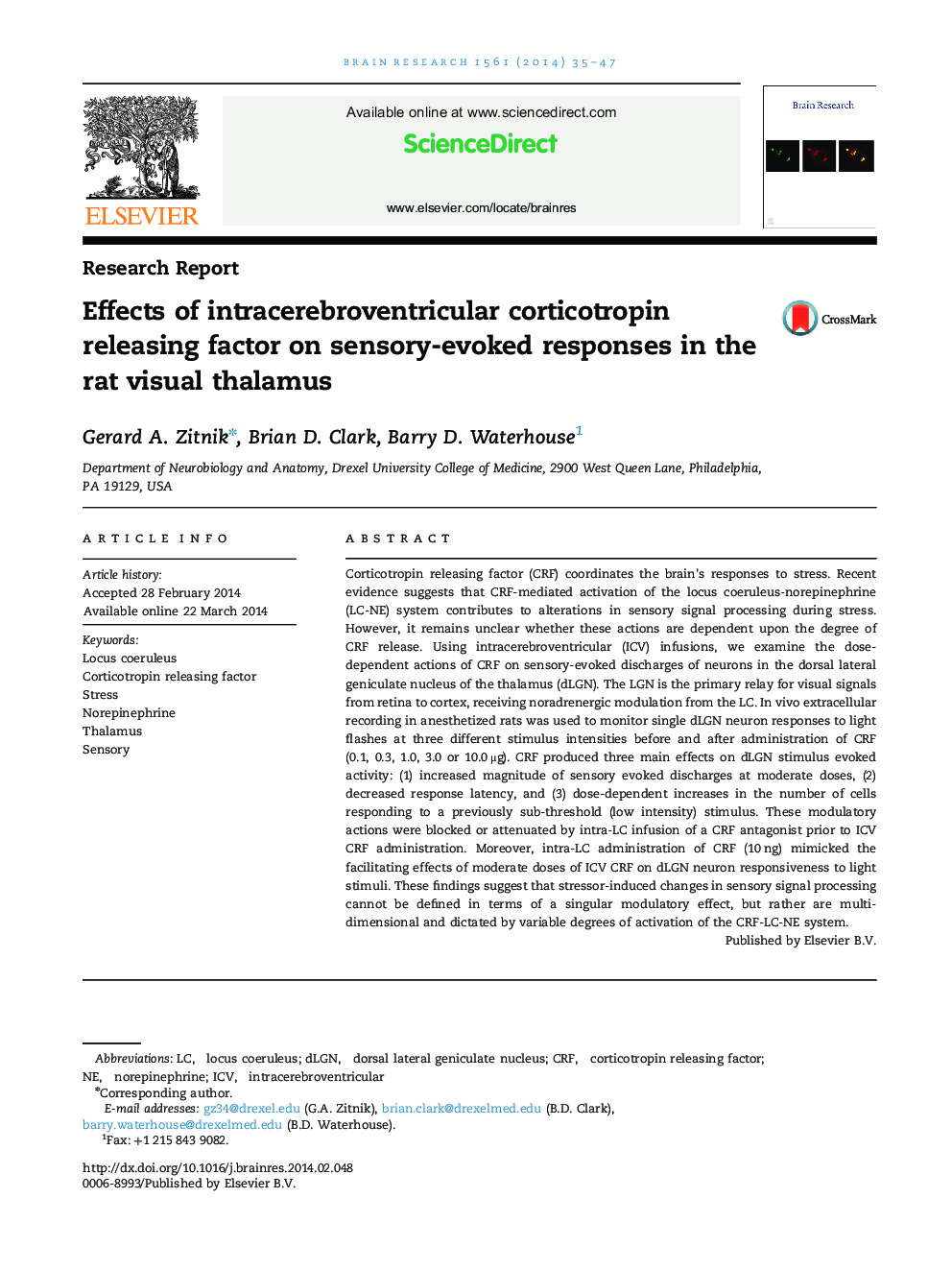| Article ID | Journal | Published Year | Pages | File Type |
|---|---|---|---|---|
| 6263372 | Brain Research | 2014 | 13 Pages |
â¢We examined how different doses of CRF ICV alter LC-target sensory neurons.â¢dLGN single unit responses to light stimuli were recorded in the anesthetized rat.â¢Dose-dependent changes in magnitude and latency of response were observed.â¢CRF-induced changes were blocked in animals pretreated with CRF-antagonist.â¢Changes in dLGN activity are based on the degree of CRF-LC-NE activation.
Corticotropin releasing factor (CRF) coordinates the brain׳s responses to stress. Recent evidence suggests that CRF-mediated activation of the locus coeruleus-norepinephrine (LC-NE) system contributes to alterations in sensory signal processing during stress. However, it remains unclear whether these actions are dependent upon the degree of CRF release. Using intracerebroventricular (ICV) infusions, we examine the dose-dependent actions of CRF on sensory-evoked discharges of neurons in the dorsal lateral geniculate nucleus of the thalamus (dLGN). The LGN is the primary relay for visual signals from retina to cortex, receiving noradrenergic modulation from the LC. In vivo extracellular recording in anesthetized rats was used to monitor single dLGN neuron responses to light flashes at three different stimulus intensities before and after administration of CRF (0.1, 0.3, 1.0, 3.0 or 10.0 μg). CRF produced three main effects on dLGN stimulus evoked activity: (1) increased magnitude of sensory evoked discharges at moderate doses, (2) decreased response latency, and (3) dose-dependent increases in the number of cells responding to a previously sub-threshold (low intensity) stimulus. These modulatory actions were blocked or attenuated by intra-LC infusion of a CRF antagonist prior to ICV CRF administration. Moreover, intra-LC administration of CRF (10 ng) mimicked the facilitating effects of moderate doses of ICV CRF on dLGN neuron responsiveness to light stimuli. These findings suggest that stressor-induced changes in sensory signal processing cannot be defined in terms of a singular modulatory effect, but rather are multi-dimensional and dictated by variable degrees of activation of the CRF-LC-NE system.
